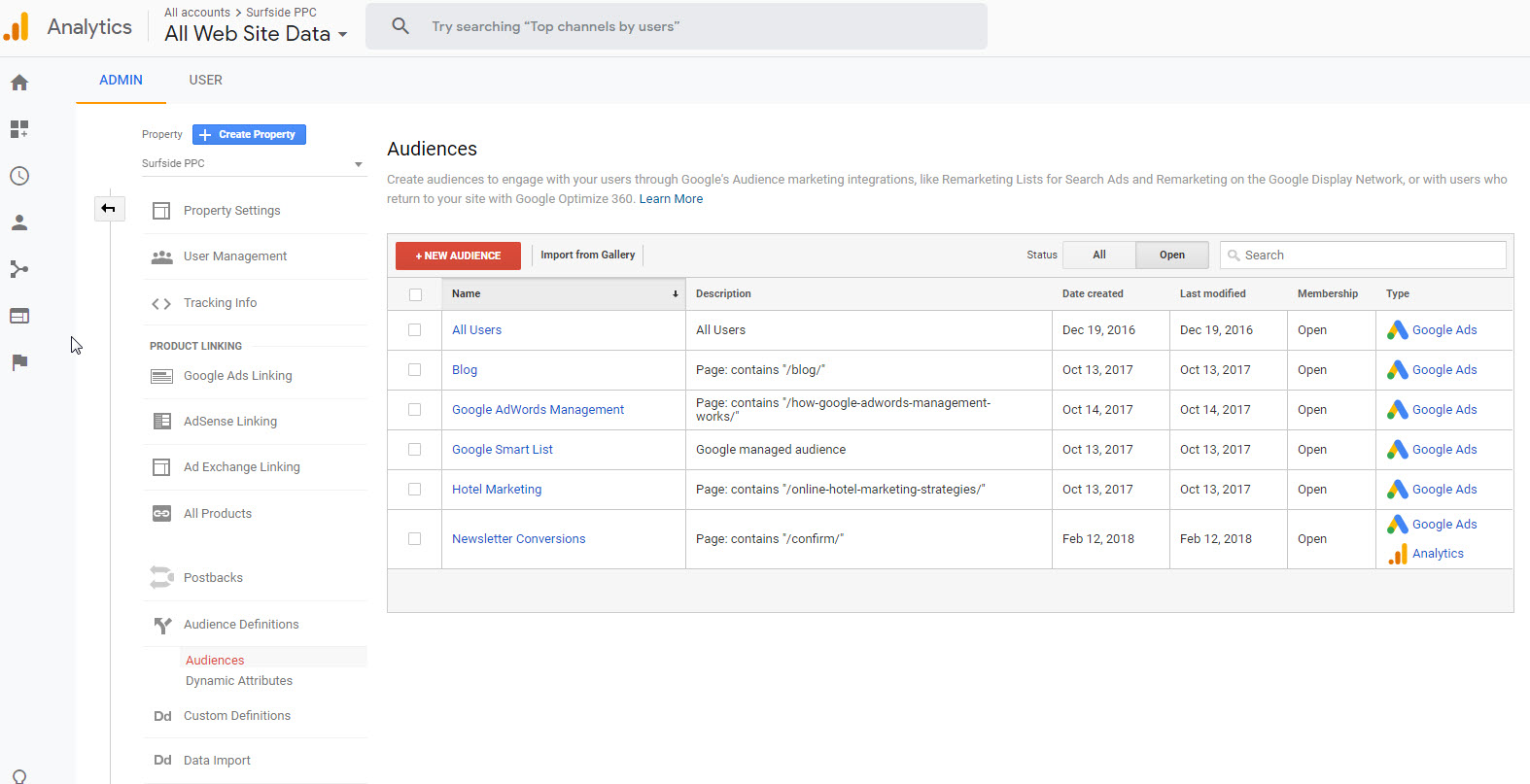Maximizing Your ROI with Remarketing In Google Analytics
Maximizing Your ROI with Remarketing In Google Analytics
Blog Article
Remarketing in Google Analytics: Transforming Site Visitor Data Into Sales
The capacity to specifically target audiences based on their habits and preferences opens doors to a realm of possibilities, propelling businesses towards sustainable development and success. Via a thorough evaluation of visitor activities and a tailored remarketing method, services can browse the electronic landscape with precision and finesse, unraveling the real possibility of their on the internet existence.

Benefits of Remarketing in Google Analytics
Remarketing in Google Analytics provides companies the chance to reconnect with site visitors that have shown rate of interest in their service or products, thereby increasing brand name presence and conversions. By leveraging this effective device, services can stay top-of-mind with possible consumers who have actually currently involved with their web site. One of the key advantages of remarketing is the capacity to target certain target markets based on their behavior on the internet site, permitting for individualized messaging and customized marketing campaign.
Furthermore, remarketing in Google Analytics can aid services boost their conversion rates by re-engaging with site visitors who may not have made an acquisition or finished a preferred action on the internet site throughout their initial go to. This targeted approach can bring about higher conversion prices and inevitably drive more sales. Additionally, remarketing can additionally assist businesses construct brand commitment and depend on by maintaining regular communication with possible clients throughout their buying trip.
Setting up Remarketing Projects
When initiating remarketing projects in Google Analytics, companies require to carefully prepare and apply tactical targeting methods to efficiently reach their wanted audience. The initial step in establishing remarketing campaigns is to specify clear objectives. Whether the goal is to boost web site conversions, promote certain products, or increase brand name recognition, having a distinct objective will guide the entire project method.
Next, businesses require to produce target market lists based on certain criteria such as site site visitors, users who abandoned their purchasing carts, or those that interacted with specific material. These listings permit targeted messaging tailored per sector of the audience, enhancing the opportunities of conversion.

Lastly, services should establish conversion monitoring to gauge the success of their remarketing campaigns precisely. By examining the efficiency data, companies can enhance their projects for better results and higher ROI.
Leveraging Audience Segmentation for Remarketing
Utilizing target market division is an important approach for improving the effectiveness of remarketing projects in Google Analytics (What Is “Remarketing” In Google Analytics?). By separating your site visitors right into distinctive teams based on their behavior, demographics, or interests, you can customize your remarketing efforts to target these specific segments with appropriate ads. Audience division allows you to produce even more tailored and targeted projects, raising the opportunities of re-engaging site visitors and driving conversions
Segmenting your audience allows you to provide customized messaging that resonates with each group's demands and preferences. As an example, you can produce different remarketing checklists for users that abandoned their buying carts, went to certain product pages, or downloaded a particular resource. By understanding the different inspirations and passions of these visite site sections, you can craft compelling ad creatives that are more most likely to catch their interest and prompt them to revisit your website.
Moreover, audience segmentation additionally assists you optimize your advertisement invest by concentrating on high-value segments that are extra most likely to convert - What Is “Remarketing” In Google Analytics?. By analyzing the efficiency of each section, you can allocate your spending plan better and take full advantage of the return on your remarketing investment
Analyzing Remarketing Efficiency Metrics
To efficiently evaluate the success of remarketing their website projects in Google Analytics, evaluating key efficiency metrics is important. Metrics such as click-through price (CTR), conversion price, cost per procurement (CPA), and return on ad spend (ROAS) provide useful insights right into the effectiveness of your remarketing efforts. CTR suggests the portion of individuals that clicked your ad after seeing it, reflecting the advertisement's importance and allure to your audience. Conversion price gauges the portion of users who completed a wanted activity, such as purchasing, after clicking your ad. Certified public accountant helps establish the cost of obtaining a client with your remarketing project, while ROAS evaluates the earnings generated for each and every dollar invested in advertising and marketing. By analyzing these metrics, you can determine locations for improvement, enhance your projects, and allocate budget plan better to maximize the ROI of your remarketing methods in Google Analytics.

Best Practices for Remarketing Success
Building on the foundation of evaluating remarketing performance metrics, carrying out finest methods is crucial to accomplishing success in your remarketing ventures. Furthermore, make sure that your remarketing ads are visually appealing and contain engaging telephone calls to activity.
Additionally, regularity topping is vital to stop ad fatigue. Bombarding customers with the exact same ad consistently can result in aggravation and decreased special info efficiency. Evaluating different advertisement messages, positionings, and styles is additionally important. A/B testing permits you to determine which strategies generate the very best results and maximize your campaigns accordingly. Last but not least, monitor your campaigns consistently, examine the data, and make data-driven choices to constantly fine-tune your remarketing initiatives for maximum influence.
Final Thought
Finally, remarketing in Google Analytics provides services the opportunity to utilize visitor information to increase sales and drive conversions. By using target market division, examining efficiency metrics, and executing finest techniques, companies can tailor their remarketing efforts to target high-value sections properly. Through compelling ad creatives and conversion monitoring, businesses can construct brand loyalty and depend on, inevitably taking full advantage of the influence of their advertising and marketing approaches.
Through a precise analysis of site visitor activities and a customized remarketing technique, services can browse the electronic landscape with precision and skill, unraveling the real possibility of their on-line existence.
One of the key benefits of remarketing is the capability to target particular audiences based on their habits on the web site, permitting for individualized messaging and customized advertising and marketing projects.
In addition, remarketing can also help businesses build brand loyalty and trust by maintaining consistent communication with potential customers throughout their purchasing trip.
Metrics such as click-through price (CTR), conversion rate, cost per purchase (CPA), and return on advertisement spend (ROAS) provide useful understandings right into the effectiveness of your remarketing initiatives. By evaluating these metrics, you can determine areas for renovation, enhance your projects, and designate spending plan extra properly to make best use of the ROI of your remarketing approaches in Google Analytics.
Report this page